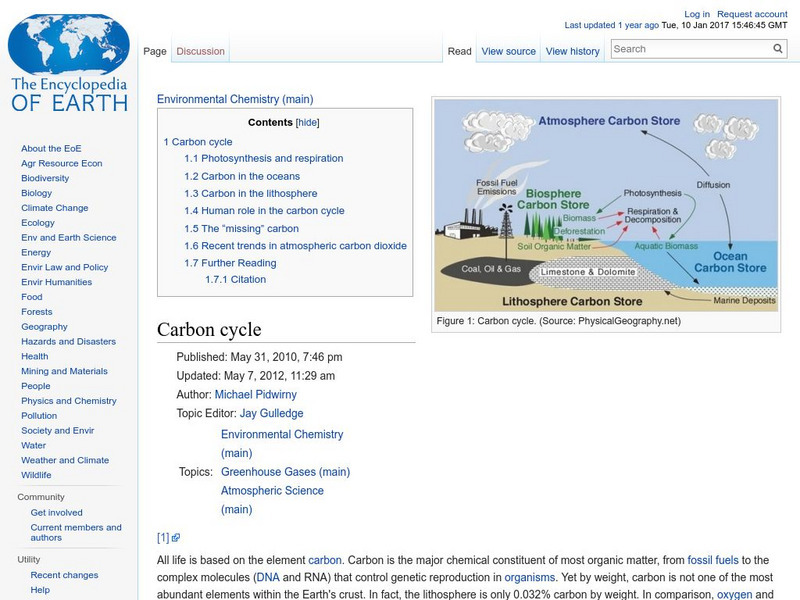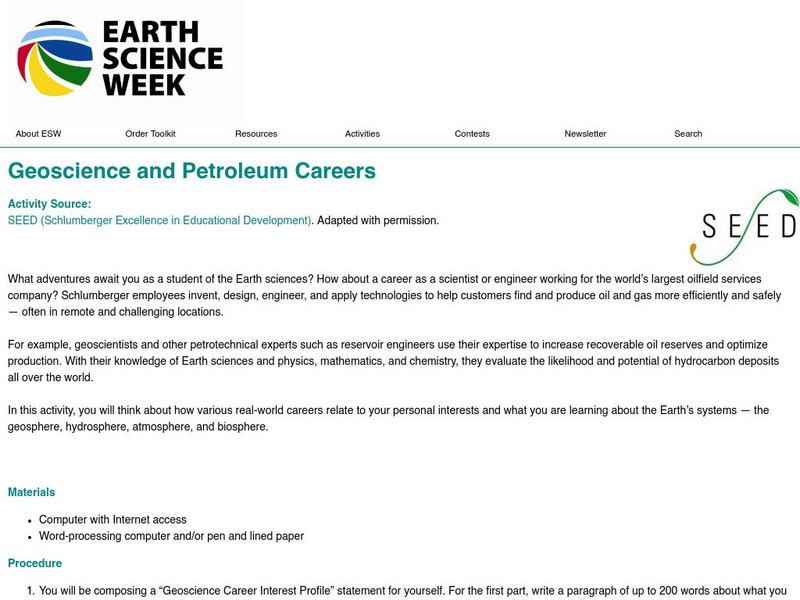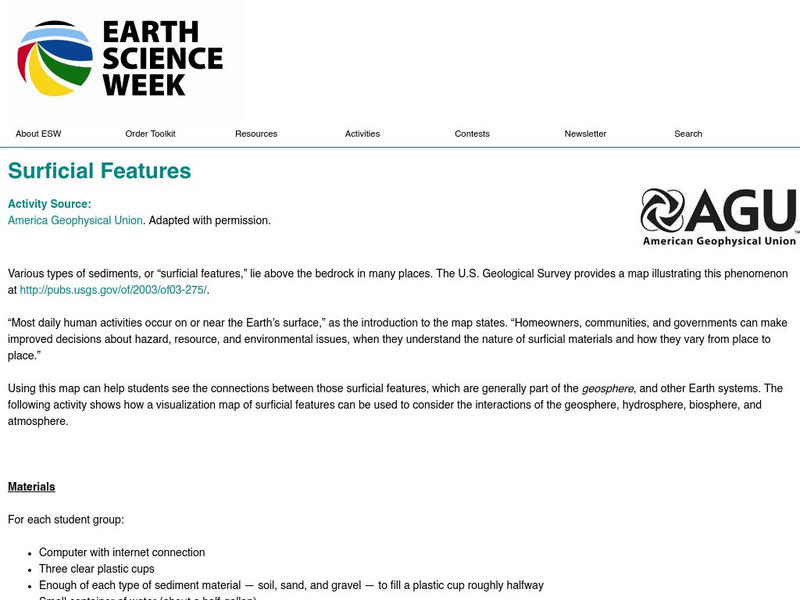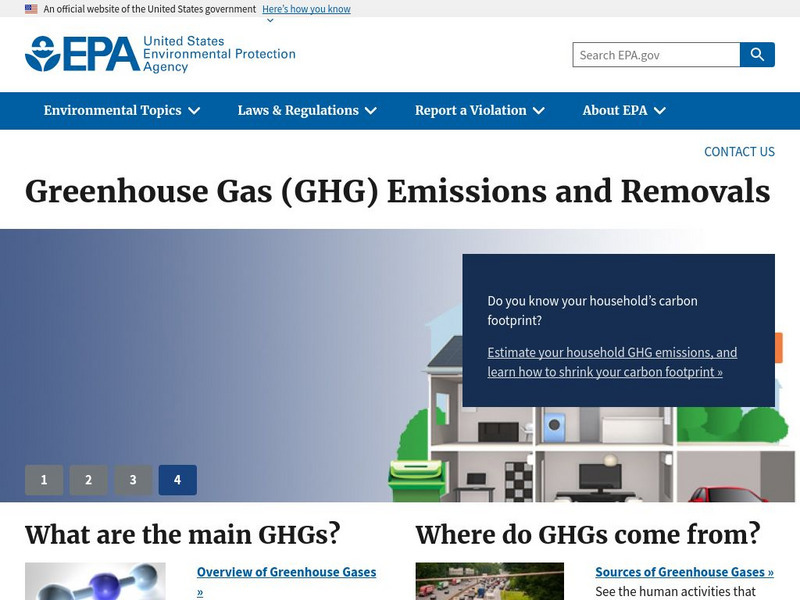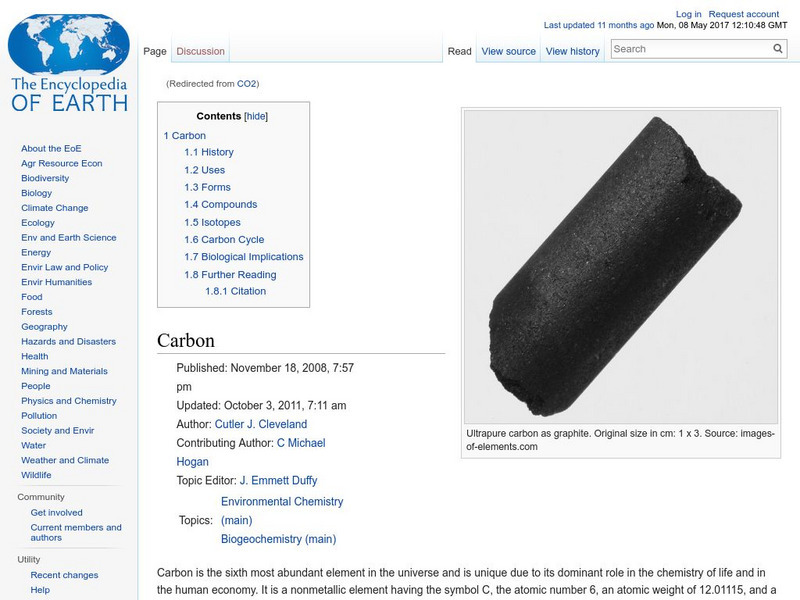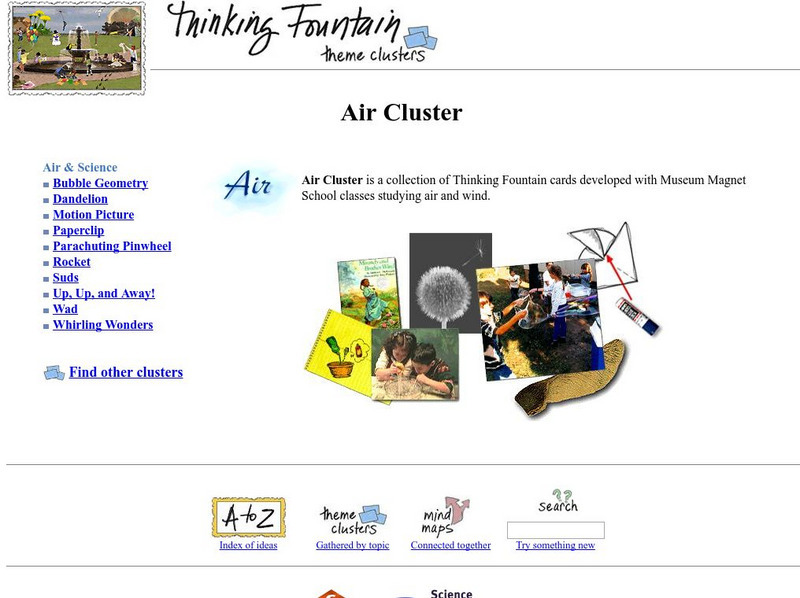Hi, what do you want to do?
Science Education Resource Center at Carleton College
Serc: Learn: Atmospheric Science Explorers
Learning modules created by teachers for teachers to increase the "knowledge of and interest" in the atmospheric sciences. Modules include background information, hands-on activities, and assessments. Modules cover topics such as ozone,...
University Corporation for Atmospheric Research
Ucar: Atmospheric Science Explorers: Global Climate Change
A detailed overview of global climate change, with explanations of Earth's climate change, the carbon cycle, ecosystems, and greenhouse gases, and how the movements of matter and energy impact on climate. All information is reinforced...
Other
Digital Library for Earth System Education (Dlese)
This resource provides materials for teachers on a huge array of topics. Search site by topic, grade level, and desired output (such as lesson plan, case study, assessment or tutorial). Site is focused on earth science, geography, and...
American Geosciences Institute
American Geosciences Institute: Earth Science Week
This site includes learning resources and activities for Earth Science Week 2016. The goal of the week is to "engage young people and others in exploring geoheritage throughout the Earth systems, including the geosphere, hydrosphere,...
Encyclopedia of Earth
Encyclopedia of Earth: Environmental Chemistry: Carbon Cycle
Article explaining the importance of carbon as the basis for life, carbon dioxide's role in photosynthesis and respiration, carbon in the ocean and lithosphere, the impact of human activities on the carbon cycle, carbon that seems to be...
University Corporation for Atmospheric Research
Ucar: Elementary Globe: Earth System in a Bottle
If you have seeds at home, try this activity to help kids learn what a seed needs to grow. Students will create experimental conditions in terrariums to study what plants need to live. They will learn about the importance of the...
American Geosciences Institute
American Geosciences Institute: Earth Science Week: Geoscience and Petroleum Careers
In this activity, students think about how various real-world careers relate to personal interests and Earth's systems- the geosphere, hydrosphere, atmosphere, and biosphere.
American Geosciences Institute
American Geosciences Institute: Earth Science Week: Dangerous Atmosphere
For this activity, students research what types of severe weather their county has had over the past 50-60 years. They will look at the severity of these events and the number of injuries and deaths they caused. They will then decide...
Khan Academy
Khan Academy: Activity: Living in the Extremes of the Biosphere
In this activity, you'll describe what you think it might be like for humans to live in the extremes of the biosphere. Think about the challenges associated with living either underwater or in the upper atmosphere. Also, think about what...
American Geosciences Institute
American Geosciences Institute: Earth Science Week: Surficial Features
Using a surficial features map, students see the connections between those features and other Earth systems. They will consider the interactions of the geosphere, hydrosphere, biosphere, and atmosphere.
American Geosciences Institute
American Geosciences Institute: Earth Science Week: Look Up!
Get ready to set a course for sky exploration. The following activity is designed to help students learn to listen, read, and communicate in both written and oral formats about the sky.
American Geosciences Institute
American Geosciences Institute: Earth Science Week: Chemistry of Burning
In this activity, students use pipe cleaners and foam balls to build a model of a hydrocarbon molecule. They then modify it to demonstrate the chemical reaction that happens when the hydrocarbon is burned.
Woods Hole Oceanographic Institution
Woods Hole Oceanographic Institution: Global Carbon Cycle
Interactive learning activity examines the global carbon cycle and describes the exchanges of carbon between the Earth's atmosphere, oceans, land and fossil fuels.
US Environmental Protection Agency
Epa: Greenhouse Gas (Ghg) Emissions
Earth's atmosphere contains greenhouse gases. Find out what these gases are and where they come from. Also link to other information about how greenhouse gases contribute to climate change.
Encyclopedia of Earth
Encyclopedia of Earth: Physics & Chemistry: Carbon Dioxide
Explains what carbon dioxide is, where it is found, sources of it, and describes human activities that contribute to carbon depletion and increased levels of carbon dioxide in the atmosphere. (Updated: February 22, 2013)
University Corporation for Atmospheric Research
Ucar: Comparing Planetary Gases
Use jelly beans to compare the compositions (amounts of different gases) of the atmospheres of Earth, Mars, and Venus.
PBS
Nova Teachers: Einstein Revealed: What's Your Wavelength: Classroom Activity
Investigate the wavelength properties of visible light and the scattering effects of the earth's atmosphere on different wavelengths.
University Corporation for Atmospheric Research
Ucar: Learn: The Greenhouse Effect
A detailed overview of the greenhouse effect, with explanations about Earth's atmosphere gases referred to as greenhouse gases, and the factors that influence the heat-trapping ability of a greenhouse. All information is reinforced...
American Geosciences Institute
American Geosciences Institute: Earth Science Week: Mapping the Atmosphere
Students explore weather maps to study the atmosphere.
TeachEngineering
Teach Engineering: Distorted Disturbances
Students pass around and distort messages written on index cards to learn how we use signals from GPS occultations to study the atmosphere. The cards represent information sent from GPS satellites being distorted as they pass through...
University Corporation for Atmospheric Research
Ucar: The Sun Earth Connection: Sunspots and Climate
Through graphing data and interpretation, students learn about sunspots and their effect on the climate of our planet.
Scholastic
Scholastic: Diagramando a La Ciencia
Fun interactive Spanish site where students will be able to review science vocabulary related with the earth, atmosphere, respiratory system, flower parts and fish anatomy. It provides the English version and different levels of difficulty.
Science Museum of Minnesota
Science Museum of Minnesota: Air Cluster
Interesting site with links to activities about wind and air in many forms. Browse the different activities and investigations on the properties of air on the toolbar to the left of the page.
University of California
Ucmp: Creating an Earth System: Interactions in the Earth System
A brief description of the four spheres of the Earth, with an activity where students brainstorm interactions among them.









